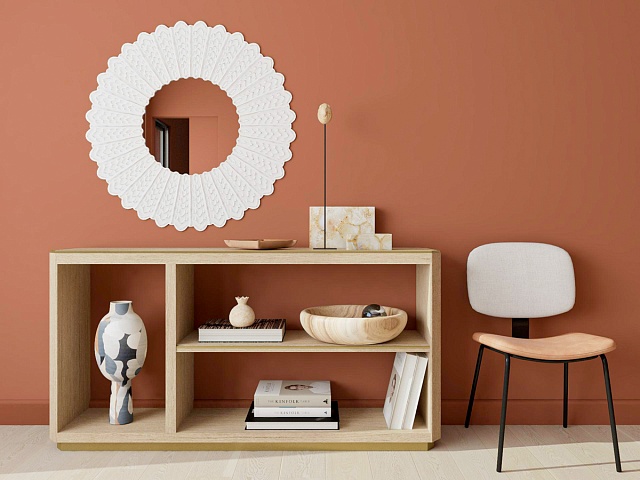By Miracle Nwankwo
One of the solutions proffered by experts to solve problems in interior design is the concept of negative space. This concept permeates all aspects of art and design, whether in painting, architecture or interior decorating. Negative space can also be likened to some natural modalities that create an absence to make a profound impression, e.g the hole in a doughnut, the interval between lightning and thunder, an eloquent pause in a conversation, the official work leave you to take to refresh and restart.
According to Mosaik Homes, “In art and design, negative space refers to the area on a paper or in a painting that is not taken up by the subject. This lack is used to balance out the piece and make the other elements within pop even more powerfully.” “In a home, negative space could be considered as the blank spots in your space where there’s no design; meaning no art, no furniture, no stuff in general.”
Negative space is a great option, and every home needs it to function, to offer visual balance and to zone spaces. It is the breathing space where activity and stimulation stops and gives you a chance to take stock and regain balance.
Of late, I mention the need to declutter your home to give it an ambience that makes it exquisite. Negative space is more than decluttering, “it is that “empty” space around and in between everything else, more often than not highlighting and showcasing everything next to it,” says Karen Knox, founder of Making Space.
Just like we have the concept of negative space, there is also positive space. Positive space by Karen Knox is that “space that is taken up with actual “stuff”; furniture, lighting, artwork, accessories….”
From the definitions of positive and negative spaces, we can understand that space is of the essence in interior design, because interior design is first and foremost, the design of interior spaces. But design can become chaotic when every space in a room is used up.
One of the disadvantages of positive space mentioned in a book titled; Ten Things Women Can Do To Build A Better Life, by Donna Carter, states that: “over decorating creates chaos out of what could be stunningly beautiful.” This principle affirms the common old saying that “too much of everything is bad”. Keeping it simple is not out of fashion; empty space is also design.
Negative space is very important in designing a home or any room because it adds to the beauty of that home by creating a sense of order and restfulness. It gives the eye the freedom to see those items in the home that really deserves attention.
In situations where you want to show off a home element amongst other items in the home, using the concept of negative space enables that striking furniture, pieces or design, to take centre stage without being interrupted by other objects around them.
You might fall into the category of people who love to fill every space in their homes. Often, this may be as a result of our culture or background, but there is no harm in trying new things, including new design techniques.
The optimal goal of designing any home is to inspire a feeling of calmness and serenity. The urge to fill every wall and every corner with a design element, so space doesn’t feel “blank” is a common design mistake, says apartmenttherapy.com. You should consider accommodating negative space to transform the ambience of your home.
Below are a few ways to infusing negative space into your home:
The Floor:
The floor is the first contact when you walk in through the door, and it is one of the most visible elements in a home. Sometimes the floor can become obscure and invisible when many household elements rest directly on it. On the other hand, limited spaces are usually the reason why most floors look crowded. However, we can try to introduce the concept of negative space in flooring and influence the mind to detect those small spaces as more open and expansive. For example, consider using furniture that has legs rather than furniture that sit directly on the floor which eat up floor square footage, and adds to the positive space.
Also, some people believe that lighter colours give a more open, airy, and uplifting vibe than darker shades. Why not consider using lighter colours for your floor to help give the illusion of a larger and more open space.
The Wall:
One of the secrets to having a beautiful home with an outstanding decorated wall is avoiding too many details. There is no need trying to hide the walls when they can contribute to the beauty of the home. According to Casa Spazio of River North Design District (RNDD): “As long as your design is balanced, large empty areas can contribute to your design in a bold and powerful way. Embrace the white space, let it breathe, and don’t try to hide it, making it a powerful part of your home’s design.”
Sometimes, you need to allow the wall to speak for itself and tell its own subtly beautiful story.
Item Arrangement:
In embracing the concept of negative space, creatively freeing up space is the main deal. Let this guide your mind as you construct positions for each household element. One of the advantages of negative space in home item arrangement is that they do not have to follow the usual mundane arrangement, you can choose to be creative and arrange pieces in different ways, bearing in mind that foot flow is important. An airy room is not just appealing; it also allows the proper flow of energy.
In conclusion, it’s important to think of negative space from an aesthetic standpoint. When you include the right amount of negative space in your home design, you strike a perfect balance between the parts of the house, the household element and your unique designs. Using negative space as interior design editing will give you the finishing touch that allows your aesthetic to take centre stage.
You will make a huge impact on the ambience of your home when you decide to embrace negative space, until then, Happy Decorating!





Comments are closed.